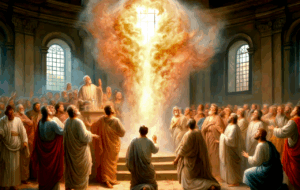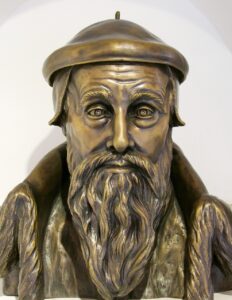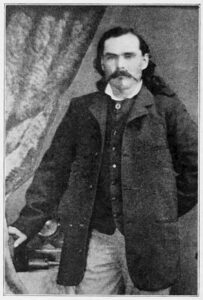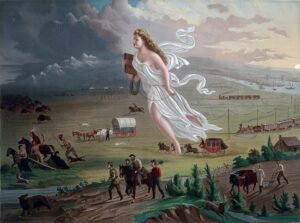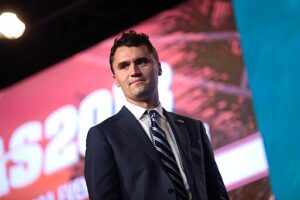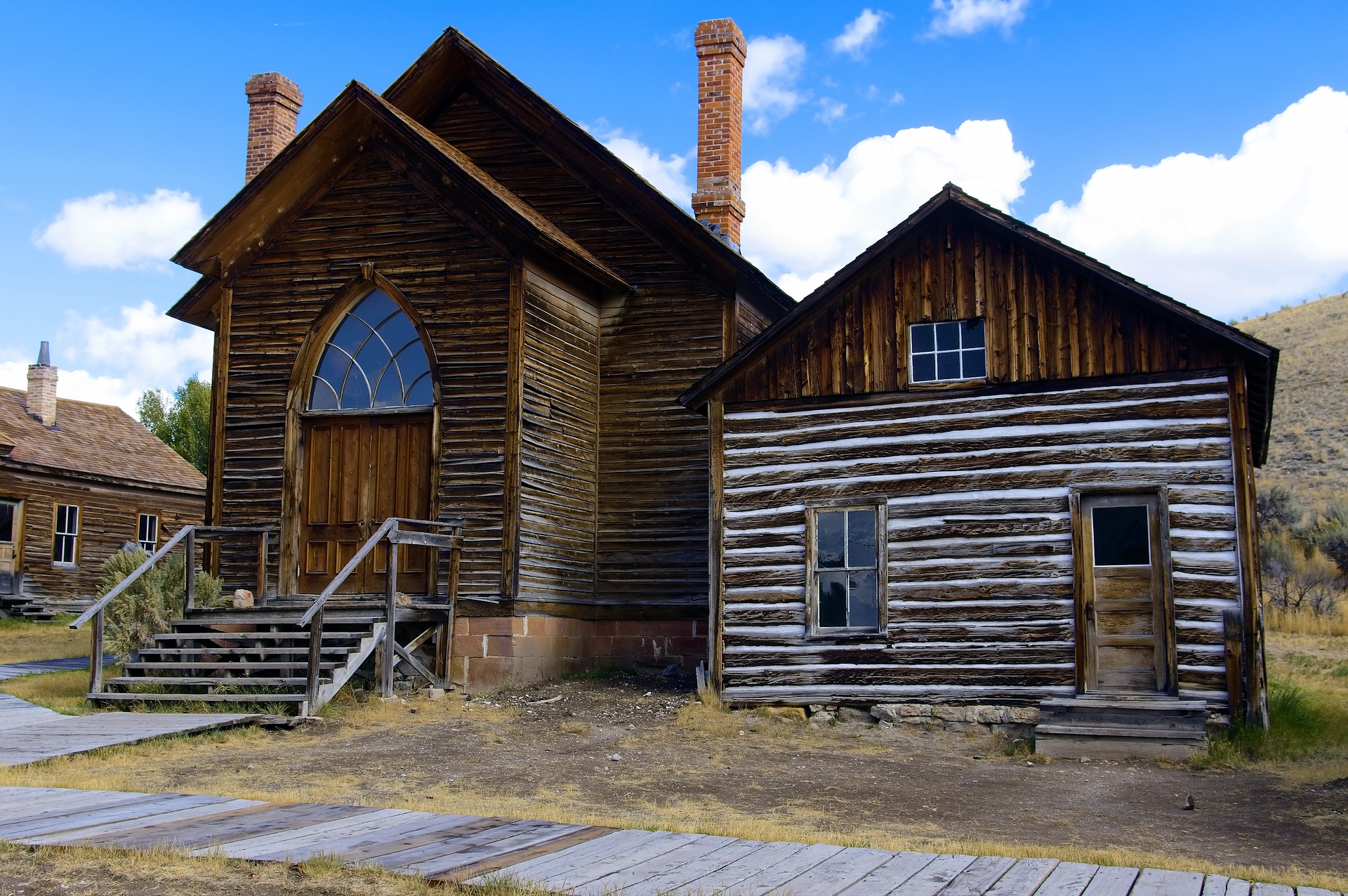
Bannack Methodist Church, Bannack Montana
Preface:
The information regarding Rev. James McGehee in the paper below is a true and accurate account of his life and activities as a Methodist Circuit riding preacher based upon newspaper articles, primary sources such as census, marriage, and cemetery records, and other genealogical notes. The reader will find any speculation noted as such in the text.
A local traveler passing through the countryside near Dade County, Missouri, sometime around 1875, could hear a voice in the distance. Nearing the spot, the traveler saw a horse tied beside the small forest trail. Now the voice, more clearly in the mind’s view, is recognized by the traveler. The local circuit-riding Methodist preacher, Uncle Jim McGehee, is talking to his God. It is the messenger talking to the message-giver. “Plunkin a watermelon out in a patch shows you whether it’s ripe or not and soundin’ a man in the same way can give you a pretty good idea of whether his inside is worth a continental,” the preacher is heard to say as the traveler passes on hoping not to disturb the interaction. In time, Rev James McGehee, a large framed man with heavy swaths of hair, the “giant of the Ozarks,” would depart his secret place with God in the Missouri woods, light upon his horse, and continue his journey toward his next destination.[1]
The hot forge melts metal to create great swords. In the crushing pressures of the earth, diamonds form and become beautiful gems. When pruned correctly, the fruit tree produces fruit and becomes healthier. It seems that struggle, pressure, and pain always produce something better and stronger. The forge which produced Methodism grew out of a struggle within the Anglican church. One of those who would come to birth the Methodist church of today was John Wesley. He was born in 1703. His father was an Anglican Priest, and his mother was a dedicated Bible teacher.[2] It was in this ministerial home with such an emphasis on biblical foundations that Wesley grew up. While attending Oxford University, he, his brother Charles and a group of others began to devote themselves to the work of God. It is reminiscent of the passage in Acts 2:42, “they devoted themselves to the apostles teaching, and to fellowship, to the breaking of bread and to prayer.” These students developed a dedicated and methodical approach to study and devotion to God, giving them the label “Methodists.”[3]
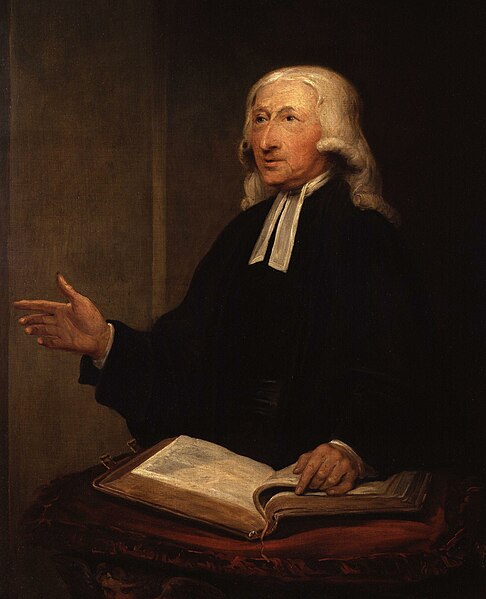
In 1732, George Oglethorpe secured a charter for a colony in North America. In 1733, he founded what today Savanah, Georgia is. [4] In 1735 Oglethorpe invited John and Charles Wesley to travel to this new colony to pastor the colonist. The Wesleys were hopeful they would be able to preach the gospel to Native Americans. The two young ministers were not successful in this missionary journey and returned home to England, questioning the veracity of their faith in God. However, God always has a plan, and the two men would soon experience a turning point in their lives from which they would never recover. The depth of discouragement would pull them toward a moment that would change the course of Christianity in many ways and bring about the framework for revival and missionary work around the world. Wesley had encountered the Moravian Christians and was impressed. They seemed to have an unshakable faith and dedication to Christ.
On May 24, 1738, Wesley attended a Moravian service at Fetter Lane Chapel in London. It was here that he experienced a life-changing moment with Christ. He would later write that he felt his heart “strangely warmed” and “I felt I did trust in Christ, Christ alone, for salvation; and an assurance was given me that he had taken away my sins, even mine, and saved me from the law of sin and death.”[5] Charles Wesley had also experienced such an event a few days prior. At this time, some within the Church of England felt the Anglian church had neglected them, and the hearts of men and women were reaching out for something more than traditional religious activity.
Wesley began to pull away from what seemed a stale religion and advocated for a more biblical foundation. He now believed that Christians could be sure of their regeneration in Christ and asserted that the Holy Spirit had the power to produce a perfect love within the believer. He had experienced a moment of authentic relationship with a real father-God. It was not a ritual of religious functionality but real, tangible, and life-altering. Like the woman at the well drawing her neighbors come and see, Wesley now had what he needed to fulfill the call of God on his life. It would only be a few months until John found himself preaching alongside George Whitfield in the open air as the Methodist revival began to move across the English landscape.[6] The Methodist Church would later divide up the nation into districts. Each district then was divided into circuits; through these circuits, preachers would travel, preaching the gospel of Jesus Christ and pastoring the flock of God throughout the countryside, sometimes out in the open without a building or pulpit.[7] “Open air” preaching, while distasteful to Wesley, would unbeknownst to him, set the tone for thousands of sermons and hundreds of thousands of miles across vast distances in the years to come, and Methodist Circuit riding preachers would crisscross the wilderness preaching God’s word.
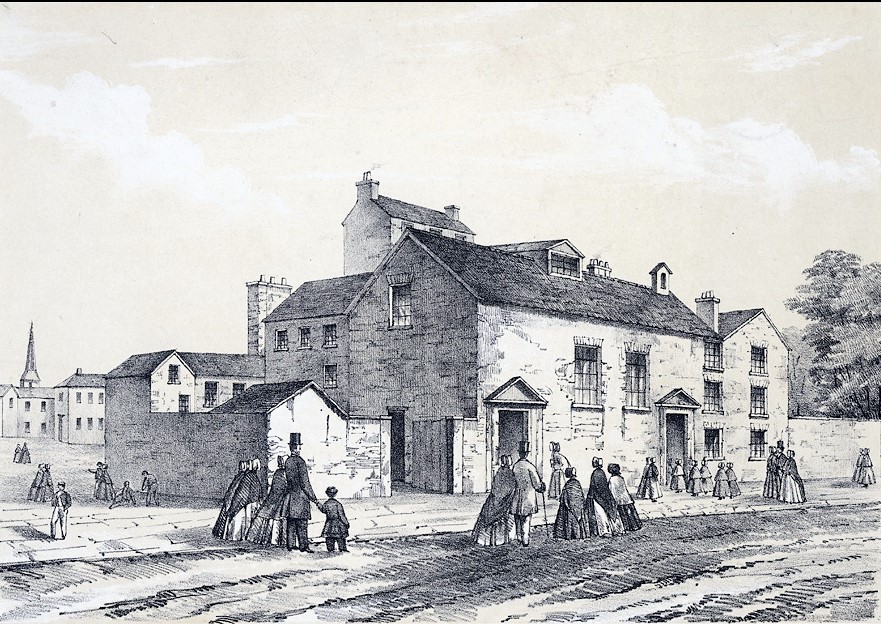
“Uncle Jim McGehee” was heard before being seen, his booming voice bellowing out hymns as he crossed Southwestern Missouri’s ridges. “I am just from the fountain, Lord, I’m just from the fountain, I am just from the fountain that never runs dry.”
The people of the area loved when Jim would be in the neighborhood. If he saw a farmer hard at work in the field, fighting to get the work done to attend the church gathering, Uncle Jim was known to tie up his horse and take up part of the load to help the agriculturalist finish his chore. Many remembered seeing the good circuit rider atop a large wagon of hay, riding along singing, “ooooh, come oh angel band, come and around me stand, Oh, bear me away on your snowy wings, to my immortal home.[9] James McGehee was a towering man with a full head of hair. He would often plow his hands through his thick locks and convey some deeply profound thought. One such thought recorded was…
“A man is a lot like a tree. Gnarles and ragged on the outside, a hidin’ a fine soul within, or maybe grand lookin’ from without but all decaying and worm eaten beneath the outer coverin’. Or sometimes a man and a tree gits bent in the winds of life, and other times they weather the tempests and make fine timber.”[10]
Uncle Jim McGehee was a Circuit Riding Methodist preacher in the area around Dade County, Missouri. He was born to James and Jane (Patterson) McGehee in Tennessee on October 10, 1822[11]. At only about 7 or 8 years old, he migrated with his family from Lincoln County, Tennesse, to Morgan County, Illinois, then to Knox County, Illinois, where he lost his father and a sister to death. God prepared this young boy for traveling. James traveled around 1000 miles between the ages of 7 and 16 when the only means of such movement were ox carts, horses, mules, or on foot. By 1840, James and most of his siblings and widowed mother had migrated south to Lawrence County, Missouri, about thirty miles west of the town of Springfield, Missouri. God had a plan, and he brought James to this place through his parents’ decisions and other factors. It would be here that God had ordained this man to preach and teach the efficacious word of almighty God and change the course of innumerable people.
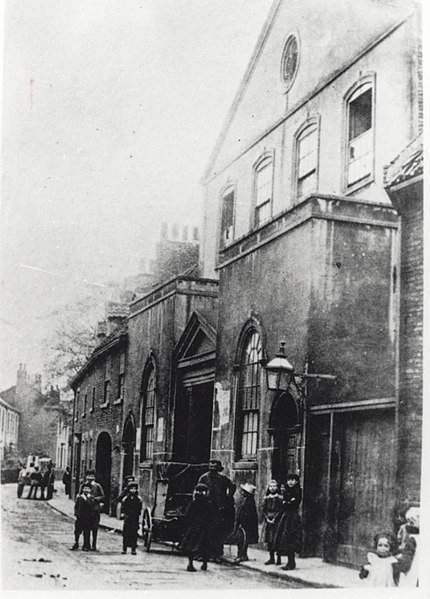
There is no information about how he became a circuit-riding preacher or when he committed to following Christ. One record describes him as a “young preacher” in the time frame directly after the civil war.[12] There is another reference to his already being a minister during the civil war.[13] In 1850, James lived next door to a Methodist minister named George M. Minton. Rev Minton was a well-known minister who began preaching in Southwest Missouri before the Civil war, spending forty years in that work.[14] Could it have been that this pioneering preacher brought Jim into the Methodist work? These issues will likely be lost forever beyond that enormous veil of time. All we can know for sure is that Jim McGehee was utterly committed to the work of God. At some point, Jim McGehee had an experience in which he knew that Jesus was his source of salvation and found it so profoundly life-changing that he would dedicate his life to the challenging and sometimes treacherous task of the Circuit Riding Preacher. Just as John Wesley had experienced before him, James had an experience that locked his focus on eternity with no intent to retreat.
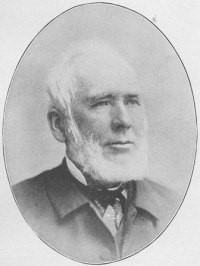
1821-1892[15]
Just as we do not know the name of the pastor leading the message that day in May when John Wesley encountered a real and tangible God, we also do not know the names of the Irish immigrants converted under Wesley’s ministry. These immigrants ended up in North America, bringing Methodism in tow. Another Methodist export to the New World was Francis Asbury. Francis Asbury was born in Staffordshire, England, on August 20, 1745. He dropped out of school at age 12 to go to work. By age 14, he had been born again and was a full-time Methodist preacher at age 21.[16] In 1771, John Wesley called for volunteers to preach in America. Asbury accepted the call and landed in Philadelphia in October of that same year.[17] Not only is Asbury credited with the distinction of being the first circuit-riding Methodist preacher, but he is said to have been the only Methodist preacher who did not leave during the American Revolution. At the time of Asbury’s arrival in this fledgling colony, there were only 600 Methodists in “America”. [18] Asbury immediately began traveling and preaching the gospel. By winter, he was ill; this would be his life for the rest of his time on earth. At one point, he had to swap his horse for a carriage because of health issues, but he would not stop telling everyone about Jesus and his love. In 1784, John Wesley asked Asbury and Thomas Coke to launch the Methodist Church in North America. Thomas Coke ordained Francis Asbury in Baltimore at the “Christmas Conference,” where the American Methodist Episcopal Church was born. By 1785, Asbury was the head of the Methodist Church in America.
John Wesley never supported the Methodist Society exiting the Anglican Church. However, in 1795, four years after his death, the Methodist Church split away from the Church of England. In 1816, at the death of Asbury, the American Methodist church he had led for over three decades held a membership of 200,000. [19] By 1844, the Methodist church recorded a membership of 1 Million parishioners. Records also indicate 4000 preachers on circuits around the United States that year. By the Civil War, the membership numbers had risen to 1.5 million adherents.
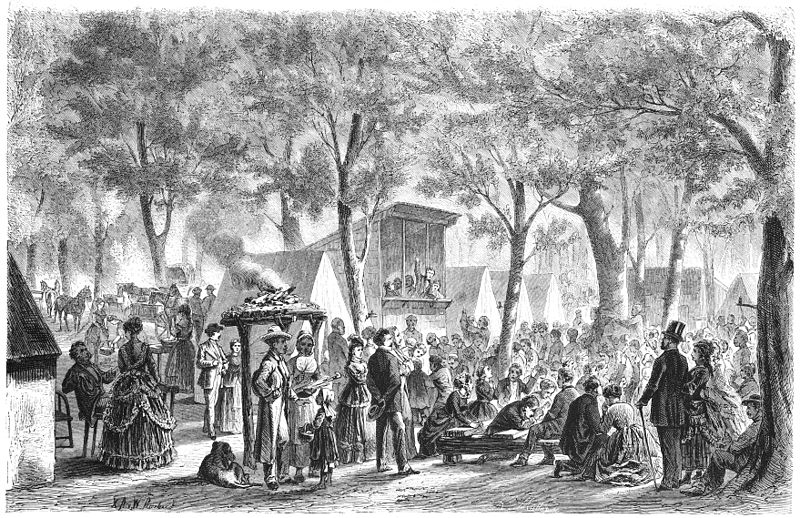
John Wesley and Francis Asbury disagreed on the topic of the revolutionary war. Asbury supported the idea of this young nation separating itself from British rule. However, these two men presented a commitment to what was eternally significant, which could serve as an example right up to the present day. Although on opposite sides of a war, they continued working together, fulfilling the purpose of the Kingdom of God.
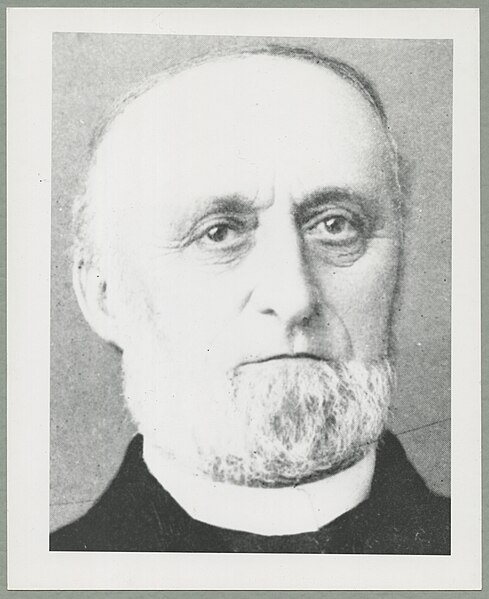
Circuit-riding Methodist preachers of the day, such as Asbury and others, faced great dangers of all kinds. Richard Hofstadter stated,
“The bulwark and the pride of the early American Methodists were the famous circuit-riding preachers who made up in mobility, flexibility, courage, hard work, and dedication what they might lack in ministerial training or dignity. These itinerants, were justly proud of the strenuous sacrifices they made to bring the gospel to the people.”[20]
The first 200 circuit-riding preachers who died were less than 35 years old, and the large majority of the first 650 ministers who undertook this sacrifice of ministry retired early, but not by choice. One of the first American-born Methodist preachers was Freeborn Garrettson. He had inherited a plantation and a large number of slaves. He said that he heard God’s voice say, “Let the oppressed go free,” so he freed all his slaves. He was thrown in prison in Cambridge, Maryland, after facing stiff opposition for preaching against the institution of slavery. Undaunted, he continued to preach and fight for the abolition of slavery, and some credit Garrettson with the emancipation of Richard Allen, who would go on to found the African Methodist Episcopal denomination.[21] As early as 1774, John Wesley published a document decrying the evils of slavery. Wesley purported that even those who do not own slaves but tolerate slavery would still find themselves guilty. In 1780, the Methodist church required its ministers to preach in opposition to slavery and avowed that to enslave other persons is “contrary to the laws of God.” Methodist leaders referred to slavery as the “great national evil” and pressed for “the universal extirpation of this crying sin.”[22]
Another of these preachers considerably well-known in his day was Peter Cartwright. Cartwright said of his conversion…
“To this meeting I repaired, a guilty, wretched sinner. On the Saturday evening of said meeting, I went, with weeping multitudes, and bowed before the stand, and earnestly prayed for mercy. In the midst of a solemn struggle of soul, an impression was made on my mind, as though a voice said to me, “Thy sins are all forgiven thee.” Divine light flashed all round me, unspeakable joy sprung up in my soul. I rose to my feet, opened my eyes, and it really seemed as if I was in heaven; the trees, the leaves on them, and everything seemed, and I really thought were, praising God.”
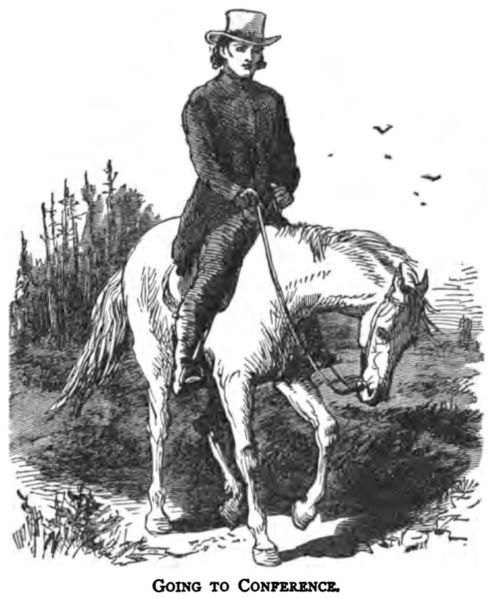
Cartwright was considered one of the most colorful ministers of his time. His moment of salvation came after hours of crying out to God for forgiveness until he felt the peace of God pour over him, and he knew he had received his forgiveness.[23] During Cartwright’s services, a peculiar wonder would take place. Referred to as “the jerks,” it is described as the body beginning to jerk wildly. Individuals, “saint and sinner” alike, would begin to jerk uncontrollably. Cartwright stated that he saw as many as five hundred people at once get “the jerks.” Cartwright once relayed a story that two brothers became angry at him for giving their sisters “the jerks.” The two intended to horsewhip him after the service. They confronted Cartwright and told him they had seen him taking something out of his pocket, and they believed this was the source of their sisters’ outrageous behavior. Cartwright carried a tin of peppermints in his pockets that he would take before he preached, but in this case, he decided to use them to another advantage. He responded by pulling out the small tin and saying, “Yes, I gave them (the sisters) the jerks, and I can give them to you too.” Cartwright reported that the two men fled for their lives but yelled that he should not follow them or they would kill him.
On another occasion, where he says the jerks were “prevalent,” a group of drunken men came to interrupt the meeting. One of the men, who seemed to be the leader, was very large. The larger man cursed the “jerks” and religion in its entirety. Suddenly, he began fiercely and uncontrollably jerking just like those he berated. He tried to run but was jerking so intensely he could not. He stopped among some young trees, violently agitated. He took out his whisky bottle and said he would “drink the jerks away.” However, he was jerking so forcefully that he could not bring the bottle to his mouth. At one jerk, the bottle hit a tree and smashed, enraging the large man further. He cursed and swore even more until suddenly one of the jerks so dynamically came upon him that it snapped his neck, and he fell to the ground, shortly passing into eternity.[24]
There were always those who sought to cause trouble for the preachers and their flocks. A story told as occurring about 1820 in the state of Texas conveyed how several preachers were at a camp meeting near the Red River. Rowdy folks nearby began to mock the meeting goers. The preachers, of course, rebuked the men provoking them to tear down the crudely made pulpit and disperse the crowd. These ministers gathered the faithful flock together and ran off the ruffians, having a “very successful meeting.” [25]
During the civil war, Rev James McGehee received news that Union forces from Kansas captured two young men, Martin and Frank Speer, Confederate soldiers home on furlough. Jim McGehee was very concerned for these two men of his flock, the Speer family being a part of his ministerial area. He immediately went to the home of Joshua Ragsdale, requesting assistance from him as he was known to be a “Northern sympathizer.” Rev McGehee requested that Joshua’s son Alex accompany him to intervene with these soldiers to ensure the safety of these two young men. Alex knew the Captain of this Union troop and some of the men in the unit. As McGehee and Ragsdale approached from the rear, where the two Speer boys were under guard, Ragland would later state the two made a grave error by speaking to the two Speer boys. As McGehee and Ragland continued onto the front of the column, Ragland introduced Rev. McGehee to the Captain as a minister, a non-combatant, and a good man who had never taken up arms against the government. The Captain replied that he had heard of Rev Jim McGehee. The minister’s reputation seemed to prompt the Captain’s good graces as he told the two men that he would be happy to hear it if McGehee had a request. Jim explained that the two men, Frank and Martin Speer, were regular soldiers in the Confederate army, not “bushwhackers” or connected with any “marauders.” Ragsdale confirmed what Rev McGehee had said, and the Captain assured the two men that the army would treat the Speers as prisoners of war and that he would immediately go back and ensure their guards understood. However, just at that moment, they heard gunshots from the column’s rear. Arriving where the two Speer boys had stood, they found them dead on the ground. The Union soldiers taking matters into their own hands apparently believed that these two men were about to be released and executed Martin and Frank Speer.[26]
Dangers were everywhere along the trails worn by these men who proclaimed the goodness of God. There were many hours of horseback riding, at times in poor weather. Because they traveled in all kinds of weather, a saying developed. “This weather is only fit for cows and Methodist preachers.”[27] They rode through dry places, swamps, forests, and wooded areas where hostile Native Americans stood waiting to take them unawares. They crossed rivers and streams in the cold of winter and the heat of summer. It might take the preacher three months to make the complete circuit of all the churches he was held responsible for carrying everything he would need in his horses’ saddlebags. In Deadwood, South Dakota, Rev. Henry Weston Smith preached on the corner of Main and Gold or often in front of a drug store named “Bent and Deetken’s.” He was tall, about 6 feet, forty years old. On August 20, 1876, Rev Smith left Deadwood for Crook City to preach. His body was found sometime later along the side of the road. He had not been robbed and most attributed his death to Native Americans in the area. However, some speculated he had been murdered by those who owned the area’s saloons and brothels and were concerned that his preaching against such things was bad for business.[28] Francis Asbury’s journal gives a brief view into the type of distances these early preachers traveled, planting the seeds and cultivating God’s garden. For May, the year 1870, Asbury recorded, “Nearly forty miles,” about thirty miles,” “eighteen miles,” sixteen miles,” thirty-five miles,” “twenty miles,” “ten miles,” and “fifteen miles”[29]
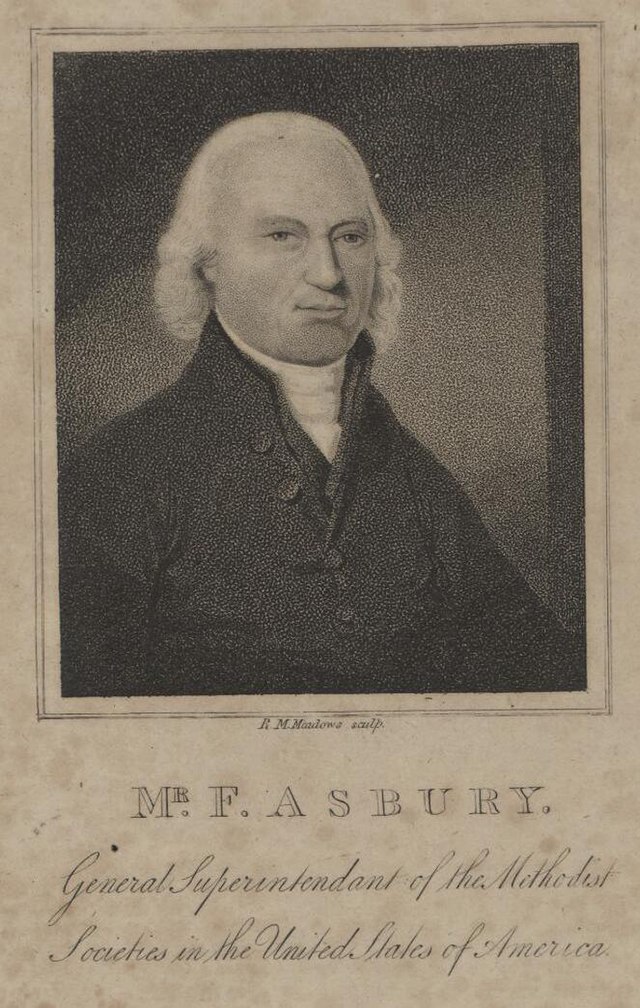
In modern times it may not seem like much. Many travel this much in a few days with a local commute. However, this one hundred and eighty-four miles was likely on horseback through whatever country presented itself at the time. Asbury traveled between five and nine hours on several days. Freeborn Garrettson, mentioned above, preached to five hundred congregations of people, traveling over five thousand miles in just one year. At the end of his life, some estimated that Asbury had traveled over three hundred thousand miles during forty-five years of ministry. If one counts only the state of Virginia, Asbury trekked into that state alone over one hundred times.[30] As stated earlier, preachers were sometimes blessed to have a church to conduct their services. However, in other cases, these services might be held in homes or in the open air. It would be in some of these homes that the minister might also stay while he was in the area. The preacher stayed wherever the room was available and often ate whatever a family presented to him. John W Talley wrote in his journal that one family served him musty cornbread, the lungs of a deer fried in rancid bacon grease that was difficult to chew, and corn coffee with syrup as a sweetener.[31] However, they knew the reason for their work and dedicated themselves to preaching God’s word through any struggle. Isaac Boring said, “While riding through the rain and dark, with no human being with me, my soul was comforted on the reflection of the omnipresence of my Saviour: I felt he was near to bless and preserve me,”[32]
Stories tell that Uncle Jim McGehee’s greeting party might likely be a group of children barreling out of the front door to welcome the preacher. One of the older boys would take the horse, and with one of the smallest children thrown over his shoulder, he would step inside the home, stating, “Put on the big pot to bile, and make up a couple o’ dozen more biscuits, folks. The preachers come to supper!” He might play on the floor with some of the children later or bounce a small child on his knee. “You can pretty well tell how a corn crop’s goin to turn out just by lookin at the seed in the corn crib,” he would say.
After the meal, the family would gather around as Uncle Jim would share information about the other families on the circuit, ending with family worship before everyone retired for the evening. As they all knelt there in a circle, they all were said to feel a “mysterious presence” as the circuit-riding preacher talked meekly and personally with his God, asking for a blessing on this household.
It is unclear how long Uncle Jim McGehee rode a circuit, but it is clear that he was always ministering to the people of this area. Jim faced his moments of difficulty just as all the other ministers would throughout their careers. Social upheaval always causes humans to take a side, and those who take sides often demand those around them come to one side or the other. This was the scenario in Southwestern Missouri during the Civil War. Jim’s relatives fought on various sides of the conflict, and the collateral damage of the whole situation was never far from view, especially in Southwestern Missouri, where a conglomeration of people arriving from different states with different backgrounds and varying allegiances attempted to coexist in one location. James had one son who fought for the Confederacy, Robert P McGehee, and God brought his son home safe at the war’s end. Also, at the war’s end came a different set of problems. Lawless gangs roamed the countryside. One particular gang ordered Rev McGehee to stop preaching. It is unclear what the source of this directive was, but they attached to this order the threat of death were he not to comply. Undeterred, Jim carried along his long rifle, leaning it against the pulpit during his sermons. Jim McGehee was said to be able to outjump, outrun, outwrestle, and outfight any parishioners in the area. Jim observed several “outlaws” arrive during his sermon at one of his meetings. Jim “directed the force of his fiery eloquence at them, exhorting them to repent. One by one, the men disappeared into the shadows.”[33]

One of the significant events of the day was the Camp Meeting. These meetings had begun many years before. Whether it was the Baptists or Methodists who began these gatherings is unclear. In either case, they became a centerpiece of religious activity in America. During the fall season of each year in Dade County, Missouri, local men would gather to fix the brush arbor under which the meeting goers would gather. The arbor was made from logs across as rafters and upright logs to hold it all up. Leafy branches and brush were laid across the top until it was strong enough to defend the meeting goers from rain and sun, while leafy branches on the south and west sides provided further shelter from the elements of August. Massive logs, split in two, with pegs driven into the round side for legs, were set up with the flat side upward, providing seats for the attendees. Small shelves nailed to posts stood to hold coal oil lamps for the services late into the night.
Soon a fantastic scene developed as families from all over the area migrated to this campground for three or four weeks of revival. Arriving families arriving in ox carts built log camps and would settle in for the meetings. They generally brought enough supplies to last a month and would turn out the ox to graze in the local area. Women adorned themselves with dresses made with cloth woven on looms, while men wore homespun jeans and “woolsey shirts.” One passing by one of these camps would see food cooking over open fires built in front of the temporary habitats—the cooks using Dutch ovens, pots, and kettles to cook the food. White tents dotted the landscape.
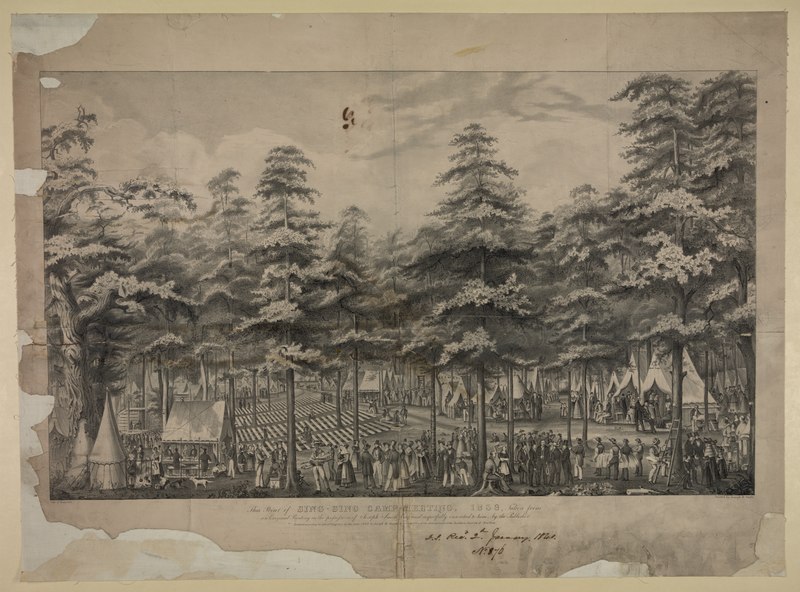
At times shots might be heard as the men went out hunting around the woods and hills of Limestone Creek when services were not ongoing. They brought back turkey and deer, readily available in the area. These men could return with enough meat to last for days. Some remembered the preacher cradling an ailing baby in his arms, soothing the small wonder of life to sleep while the mother at one of the camps worked to complete her tasks. A quote attributed to him said, “Bring all your babies and leave your dogs at home.”[34] One of these camp meetings’ greatest and most inspirational moments must have been at twilight, as men and women separated to different locations in the woods and began “secret prayer.” One person recorded hearing the women in the distance singing, “Pass me not oh gentle Savior, Hear my humble cry” while the men’s voices echoed gently across the terrain, “how tedious and tasteless the hours when Jesus I no longer see.”
Finally, the services would begin. Now, the circuit-riding preacher would take his place on the small platform at one end of the brush arbor, standing behind the pulpit. The vision before him was of “grey-bearded men leaning on their canes, white-haired grandmothers with breakfast shawls about their shoulders, on down to the tiniest babies.” Jim had not been privileged to much education, but he had a gift for speaking that kept his listeners focused and attentive. One article stated that “he possessed a gift of speech never equaled in this country. He led more souls to repentance than any man who ever preached in Dade County.”[35] He likely made quite a site wearing his homemade shoes, knit wool suspenders, and homespun clothing.
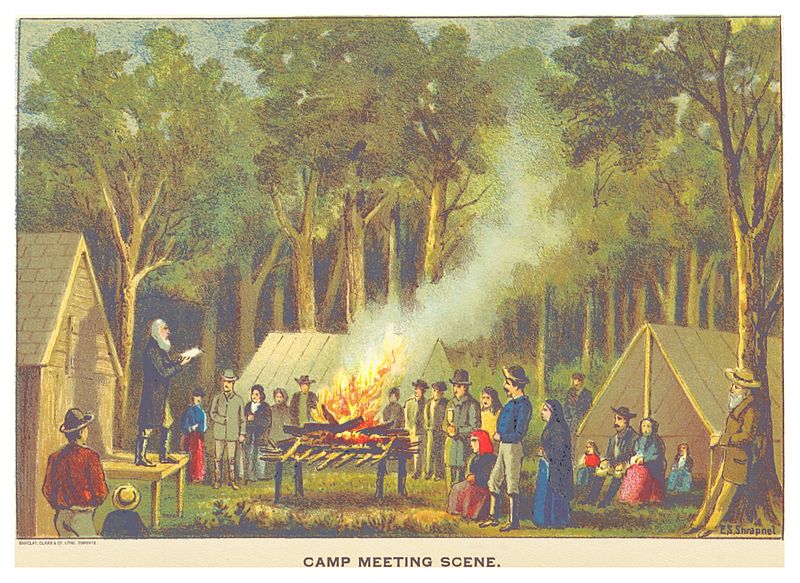
One writer stated, “in the dim flare of coal oil lights, his face seemed to radiate the inner flame of his earnestness.” Rev James McGehee would give no quarter to any forces of evil, regardless of social or political influences. “Flee the wrath to come,” he would shout. “Oh sinner, can’t you see hell yawning in fiery awfulness, waiting for your coming?” his voice echoed across the southern Missouri hillsides. However, he would not leave them in this place of guilt and despair, but according to witnesses, he would throw his head back, and his voice would calm to a tone “soft and magnetic.” However, “I see another picture,” he said. “Oh my friends, I see heaven, an eternal home of the soul, bright with the utter glory of God and His angels around the great white throne.” The preacher would step down from the small platform and begin walking around the log pews, sweat and tears mingled and streaming down his face, pleading with these souls to repent of their sins and turn to Christ before it was too late.[36] Witnesses would tell how people of all ages and genders would run to the altar sobbing and praying while parents lifted hands in praise to God for what he was doing in their families. When the moment was at its height, and Jim would see the power of God at work in the lives of these pioneers of southern Missouri, he would softly clap his hands while he paced back and forth. One of the songs he would sing was “My Soul for Joy now claps her wings, and loud her lovely sonnet sings, I’m almost home.”
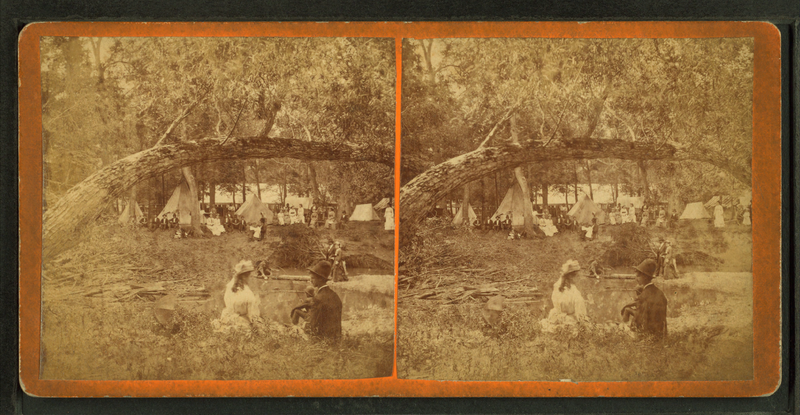
On September 8, 1895, Rev James McGehee, circuit-riding preacher of Southern Missouri, stepped through the veil that separates us from eternity and into the presence of God. He had preached the gospel for at least thirty years. The number of men and women brought to Christ is unknown. The miles he traveled and the struggles he faced are largely lost to history. He was a descendant, in spirit at least, of those circuit-riding preachers who went before him. He held the same conviction and passion as John Wesley, Francis Asbury, Freeborn Garrettson, Thomas Hinde, and many others. He was a part of something so much larger than himself, as were all of these men of God. They likely knew this as well as they traversed vast distances. It may have been fuel for their strength as they refused to give up until they had preached their last.
A newspaper article states that the last song the old preacher sang, fatigued but victorious, was that same song he would sing as men and women gave their hearts to Christ, with one minor change at the end.
“My Soul for Joy now folds her wings, And clear her lovely sonnet sings;
I’m safe at home[37].

Bibliography
Asbury University. “Francis Asbury.” Asbury University. Accessed July 17, 2022. https://www.asbury.edu/academics/resources/library/archives/biographies/francis-asbury/.
Cartwright, Peter. Autobiography of Peter Cartwright. Edited by W.P. Strickland. Copyright 2014 Jawbone Digital., 2014. Accessed July 20, 2022. http://www.cblibrary.org/biography/cartwright/pctoc.htm.
Christianity.com. “Peter Cartwright: Colorful Preacher.” Christianity.com. https://www.christianity.com/church/church-history/timeline/1701-1800/peter-cartwright-colorful-preacher-11630304.html.
Davies, Rupert. “Methodism | History, Beliefs, & Organization.” Encyclopædia Britannica, 2019. https://www.britannica.com/topic/Methodism.
General Biblical Studies, Interdenominational Christian Training Center. “How and When Was the Methodist Church Founded?” Learn Religions. Accessed July 19, 2022. https://www.learnreligions.com/methodist-church-history-700976.
Gibson, Justin. “Circuit Riders, Riding for Christ.” South County News. Last modified August 6, 2014. Accessed July 21, 2022. https://southcountynews.org/2014/08/06/circuit-riders-riding-for-christ/.
London Remembers. “Bagley’s Foundry / the Foundery.” London Remembers. Accessed July 21, 2022. https://www.londonremembers.com/subjects/bagley-s-foundry-the-foundery.
Maher, Raymond. “Henry Weston Smith Biography | HowOld.co.” Www.howold.co. Last modified May 9, 2013. Accessed July 21, 2022. https://www.howold.co/person/henry-weston-smith/biography.
Powell jr., William J. “Methodist Circuit-Riders in America, 1766-1844.” Thesis, 1977. Accessed July 20, 2022. https://scholarship.richmond.edu/cgi/viewcontent.cgi?article=1836&context=masters-theses.
Ragsdale, Howard. “Old Campground Is Historic Spot.” The Greenville Vidette, August 5, 1915. Accessed July 17, 2022. https://www.newspapers.com/clip/73257716/information-regarding-james-uncle-jim/.
———. “Tragic Event of Civil War History of Conty: California Reader Recalls Eye-Witness Story of Slaying of Speer Brothers by Kansas Troopers.” The Greenville Vidette, Greenville Missouri, July 5, 1934. Accessed July 21, 2022. https://www.newspapers.com.
Strickland, Dr. Rex W. Red River Pioneers: Anglo-American Activities in Northeast Texas, Southeast Oklahoma and Southwest Arkansas. Edited by Skipper Steely. Second. Paris, Texas: Kindle Direct Publishing in cooperation with MC&S Enterprises/Wright Press, 2014.
The Moravian Church. “A Brief History of the Moravian Church | Moravian Church in America.” The Moravian Church. https://www.moravian.org/2018/07/a-brief-history-of-the-moravian-church/.
The United Methodist Church. “Freeborn Garrettson: Methodism’s Paul Revere.” The United Methodist Church. Last modified 2018. https://www.umc.org/en/content/freeborn-garrettson-methodisms-paul-revere.
Traller, Mae. “Uncle Jim Still Rides Circuit in Memories of Ozark Hillfolk.” The Weekly Kansas City Star, August 3, 1938. Accessed July 16, 2022. https://www.newspapers.com/clip/103361062/.
Wilson, Peggy Herridge, Findagrave.com, and Larry Boyd. “Rev George Mitchell Winton (1821-1892) – Find A…” Www.findagrave.com. Last modified December 3, 2009. Accessed July 23, 2022. https://www.findagrave.com/memorial/45066676/george-mitchell-winton.
“Ancestry® | Genealogy, Family Trees & Family History Records.” Ancestry.com. Last modified 2014. Accessed July 20, 2022. http://www.Ancestry.com.
“Francis Asbury.” Christianity Today. Accessed July 20, 2022. https://www.christianitytoday.com/history/people/denominationalfounders/francis-asbury.html.
“James Edward Oglethorpe | British Military Officer.” Encyclopædia Britannica, 2019. Accessed July 19, 2022. https://www.britannica.com/biography/James-Edward-Oglethorpe.
“Obituary of Mrs. George Winton.” The Marshall Chronicle, June 6, 1918. Accessed July 19, 2022. https://www.newspapers.com/clip/105943827/.
“Slavery and the Founders of Methodism.” United Methodist News Service. Accessed July 21, 2022. https://www.umnews.org/en/news/slavery-and-the-founders-of-methodism#:~:text=In%201785%2C%20the%20first%20Book%20of%20Discipline%20published.
“U.S., Find a Grave Index, 1600s-Current – Ancestry.com.” Www.ancestry.com. Accessed July 20, 2022. https://www.ancestry.com/discoveryui-content/view/54388906:60525?ssrc=pt&tid=82302874&pid=38452329825.
[1] Mae Traller, “Uncle Jim Still Rides Circuit in Memories of Ozark Hillfolk,” The Weekly Kansas City Star, August 3, 1938, accessed July 16, 2022, https://www.newspapers.com/clip/103361062/.
[2] Interdenominational Christian Training Center General Biblical Studies, Facebook Facebook, and Twitter Twitter, “How and When Was the Methodist Church Founded?,” Learn Religions, accessed July 19, 2022, https://www.learnreligions.com/methodist-church-history-700976.
[3] Rupert Davies, “Methodism | History, Beliefs, & Organization,” Encyclopædia Britannica, 2019, https://www.britannica.com/topic/Methodism.
[4] “James Edward Oglethorpe | British Military Officer,” Encyclopædia Britannica, 2019, accessed July 19, 2022, https://www.britannica.com/biography/James-Edward-Oglethorpe.
[5] The Moravian Church, “A Brief History of the Moravian Church | Moravian Church in America,” The Moravian Church, https://www.moravian.org/2018/07/a-brief-history-of-the-moravian-church/.
[6] Rupert Davies, “Methodism | History, Beliefs, & Organization,” Encyclopædia Britannica, 2019, https://www.britannica.com/topic/Methodism.
[7] Rupert Davies, “Methodism | History, Beliefs, & Organization,” Encyclopædia Britannica, 2019, https://www.britannica.com/topic/Methodism.
[8] London Remembers, “Bagley’s Foundry / the Foundery,” London Remembers, accessed July 21, 2022, https://www.londonremembers.com/subjects/bagley-s-foundry-the-foundery.
[9] Mae Traller, “Uncle Jim Still Rides Circuit in Memories of Ozark Hillfolk,” The Weekly Kansas City Star, August 3, 1938, accessed July 16, 2022, https://www.newspapers.com/clip/103361062/.
[10] Ibid.
[11] “U.S., Find a Grave Index, 1600s-Current – Ancestry.com,” Www.ancestry.com, accessed July 20, 2022, https://www.ancestry.com/discoveryui-content/view/54388906:60525?ssrc=pt&tid=82302874&pid=38452329825.
[12] Mae Traller, “Uncle Jim Still Rides Circuit in Memories of Ozark Hillfolk,” The Weekly Kansas City Star, August 3, 1938, accessed July 16, 2022, https://www.newspapers.com/clip/103361062/.
[13] Howard Ragsdale, “Old Campground Is Historic Spot,” The Greenville Vidette, August 5, 1915, accessed July 17, 2022, https://www.newspapers.com/clip/73257716/information-regarding-james-uncle-jim/.
[14] “Obituary of Mrs. George Winton,” The Marshall Chronicle, June 6, 1918, accessed July 19, 2022, https://www.newspapers.com/clip/105943827/.
[15] Peggy Herridge Wilson, Findagrave.com, and Larry Boyd, “Rev George Mitchell Winton (1821-1892) – Find A…,” Www.findagrave.com, last modified December 3, 2009, accessed July 23, 2022, https://www.findagrave.com/memorial/45066676/george-mitchell-winton.
[16] “Francis Asbury,” Christianity Today, accessed July 20, 2022, https://www.christianitytoday.com/history/people/denominationalfounders/francis-asbury.html.
[17] Ibid.
[18] Asbury University, “Francis Asbury,” Asbury University, accessed July 17, 2022, https://www.asbury.edu/academics/resources/library/archives/biographies/francis-asbury/.
[19] “Francis Asbury,” Christianity Today, accessed July 20, 2022, https://www.christianitytoday.com/history/people/denominationalfounders/francis-asbury.html.
[20] William J Powell jr., “Methodist Circuit-Riders in America, 1766-1844” (Thesis, 1977), accessed July 20, 2022, https://scholarship.richmond.edu/cgi/viewcontent.cgi?article=1836&context=masters-theses.
[21] The United Methodist Church, “Freeborn Garrettson: Methodism’s Paul Revere,” The United Methodist Church, last modified 2018, https://www.umc.org/en/content/freeborn-garrettson-methodisms-paul-revere.
[22] “Slavery and the Founders of Methodism,” United Methodist News Service, accessed July 21, 2022, https://www.umnews.org/en/news/slavery-and-the-founders-of-methodism#:~:text=In%201785%2C%20the%20first%20Book%20of%20Discipline%20published.
[23] Christianity.com, “Peter Cartwright: Colorful Preacher,” Christianity.com, https://www.christianity.com/church/church-history/timeline/1701-1800/peter-cartwright-colorful-preacher-11630304.html.
[24] Peter Cartwright, Autobiography of Peter Cartwright, ed. W.P. Strickland, Copyright 2014 Jawbone Digital., 2014, accessed July 20, 2022, http://www.cblibrary.org/biography/cartwright/pctoc.htm.
[25] Dr. Rex W Strickland, Red River Pioneers: Anglo-American Activities in Northeast Texas, Southeast Oklahoma and Southwest Arkansas, ed. Skipper Steely, Second. (Paris, Texas: Kindle Direct Publishing in cooperation with MC&S Enterprises/Wright Press, 2014).
[26] Howard Ragsdale, “Tragic Event of Civil War History of Conty: California Reader Recalls Eye-Witness Story of Slaying of Speer Brothers by Kansas Troopers,” The Greenville Vidette, Greenville Missouri, July 5, 1934, accessed July 21, 2022, https://www.newspapers.com.
[27] Justin Gibson, “Circuit Riders, Riding for Christ,” South County News, last modified August 6, 2014, accessed July 21, 2022, https://southcountynews.org/2014/08/06/circuit-riders-riding-for-christ/.
[28] Raymond Maher, “Henry Weston Smith Biography | HowOld.co,” Www.howold.co, last modified May 9, 2013, accessed July 21, 2022, https://www.howold.co/person/henry-weston-smith/biography.
[29] William J Powell jr., “Methodist Circuit-Riders in America, 1766-1844” (Thesis, 1977), accessed July 20, 2022, https://scholarship.richmond.edu/cgi/viewcontent.cgi?article=1836&context=masters-theses.
[30] Ibid.
[31] The People of the United Methodist Church, “The Hard Road of a Methodist Circuit Rider,” The United Methodist Church, accessed June 27, 2022, https://www.umc.org/en/content/the-hard-road-of-a-methodist-circuit-rider.
[32] The People of the United Methodist Church, “The Hard Road of a Methodist Circuit Rider,” The United Methodist Church, accessed June 27, 2022, https://www.umc.org/en/content/the-hard-road-of-a-methodist-circuit-rider.
[33] Mae Traller, “Uncle Jim Still Rides Circuit in Memories of Ozark Hillfolk,” The Weekly Kansas City Star, August 3, 1938, accessed July 16, 2022, https://www.newspapers.com/clip/103361062/.
[34] Mae Traller, “Uncle Jim Still Rides Circuit in Memories of Ozark Hillfolk,” The Weekly Kansas City Star, August 3, 1938, accessed July 16, 2022, https://www.newspapers.com/clip/103361062/.
[35]Ibid.
[36] Mae Traller, “Uncle Jim Still Rides Circuit in Memories of Ozark Hillfolk,” The Weekly Kansas City Star, August 3, 1938, accessed July 16, 2022, https://www.newspapers.com/clip/103361062/.
[37] Mae Traller, “Uncle Jim Still Rides Circuit in Memories of Ozark Hillfolk,” The Weekly Kansas City Star, August 3, 1938, accessed July 16, 2022, https://www.newspapers.com/clip/103361062/.

